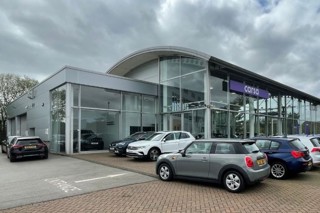Someone once said, having a great product that no one sees is like having a prize cow that no one bothers to milk.
In other words, even the greatest website won’t generate profit unless you manage to drive consistent, high-quality traffic to it.
In this digital age there are many channels available to us in order to make this happen, but no one quite as powerful as Google. Just think that 77% of automotive consumers use Google search, and that a customer performs 136 searches on average throughout the entire car buying journey.
Based on these stats alone, advertising on Google Adwords to a high level should be a priority for car dealers of any shape and size. Why would you treat Adwords as a tick box exercise when there are so many opportunities and so many potential customers to reach?
Exploring programmatic advertising
On top of bidding on the most relevant searches for the business to drive customers to the website (which is what we deem as the absolute minimum requirement) we’re also exploring programmatic display advertising aimed at people who have already visited our website.
This means that, through tracking codes, we’re analysing user behaviour on the website in order to understand what makes them more likely to buy a car, in view of serving highly targeted display advertising to them.
We’re excluding first time visitors on purpose. They need to have visited the website at least twice and shown intent; which, in our case, means performing actions, such as using livechat or submitting a request for a part exchange valuation, that show they’re in the final stages of the journey and therefore closer to purchase.
Although we will see a reduction in website visits due to the lower click-through rate typical of Google Display, we should also see far more quality coming from those visits, as they’re coming from people further down the sales funnel.
Protecting our brand
Whether or not you should bid on your own brand terms has been a hot topic for years among automotive digital marketing experts. In our view, it’s not just a matter of protecting our own brand; bidding on our brand terms has proven time and time again to deliver leads and useful insights to help steer our future advertising strategy.
Numbers are quite clear: on an average month, brand alone accounts for almost 30% of our Adwords paid for sessions and generates over 50% of Analytics goal completions. It’s safe to say that, without brand, our monthly performance would take a significant hit.
Bidding on competitors
We deliberately choose not to bid on competitors, unless strictly necessary to counteract aggressive bidding on our brand terms by local competitors.
We did run campaigns like that in the past, but we generally found the bounce rate was incredibly high. As the cost per click was pretty much the same, the campaign was clearly not cost effective for us.
Although these stats vary from business to business and there is no definitive answer as to whether competitor campaigns should be in your Adwords account, the above is definitely something to be taken into consideration.
Database advertising
We’re no longer targeting our existing customer database on Google. We keep in contact with them based on their preferred opt-in options as GDPR allows, but our business strategy doesn’t rely heavily on repeat purchases from customers. The majority of our sales either comes from referral or from traditional digital channels such as our website, Google, Facebook, and classified portals such as AutoTrader, Motors and CarGurus.
Wrapping up
Adwords is essentially a gold mine. No dealer, regardless of how big or small, should consider not advertising on Adwords. If simply covering the basics will still give you good results, there is no doubt exploring more advanced strategies, such as the ones discussed above among many others, could prove game-changing.
Author: Neil Smith, operations director, Imperial Cars



















Login to comment
Comments
No comments have been made yet.